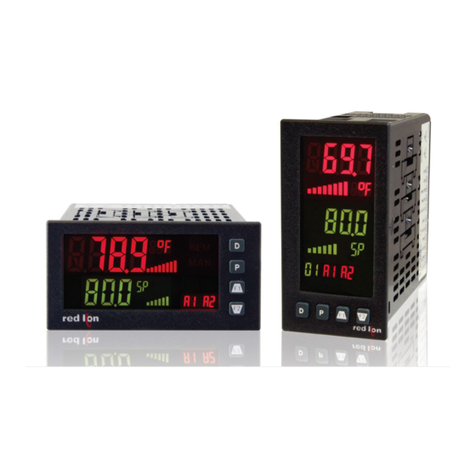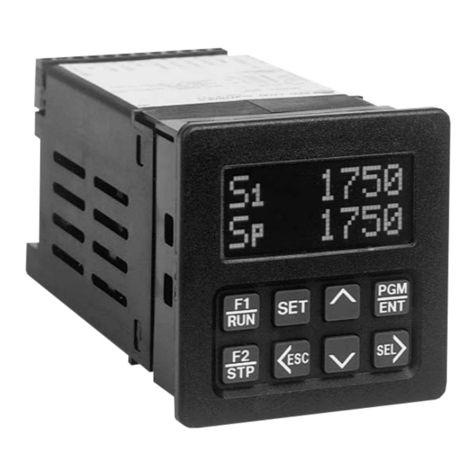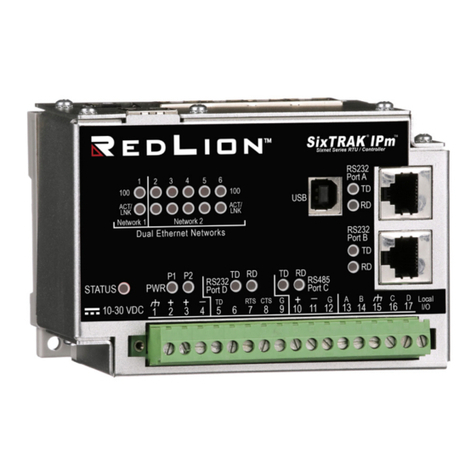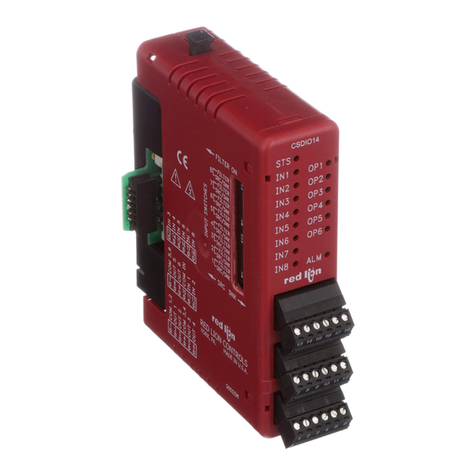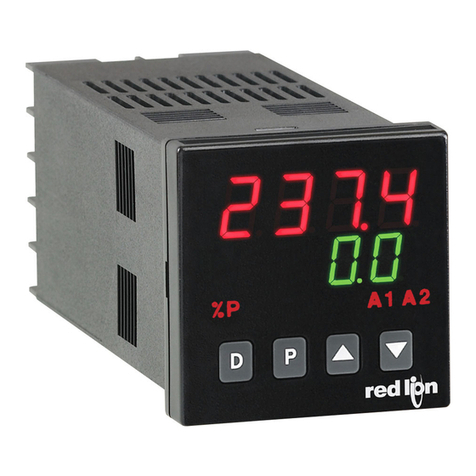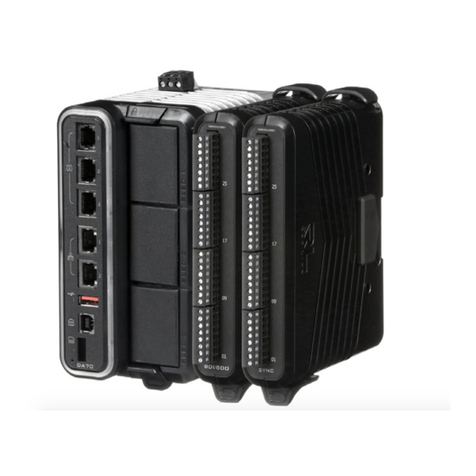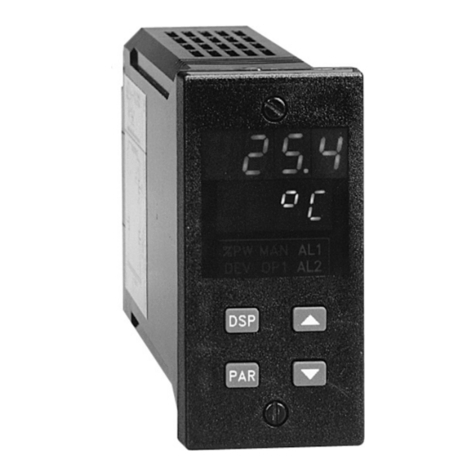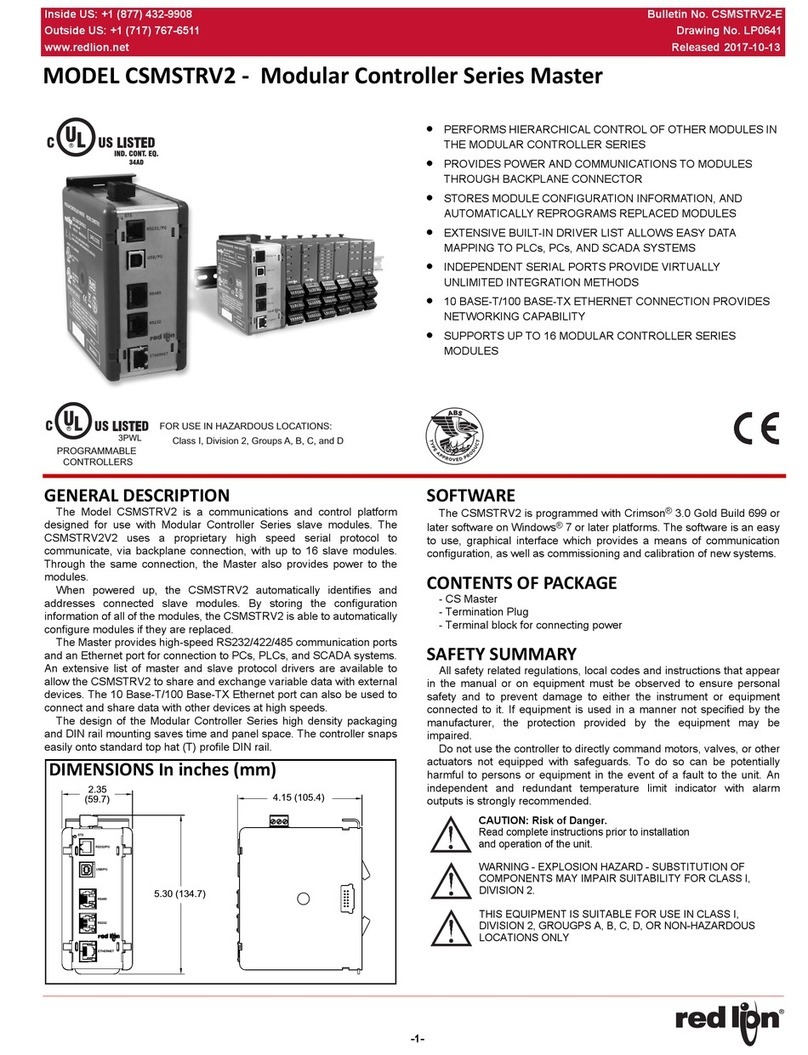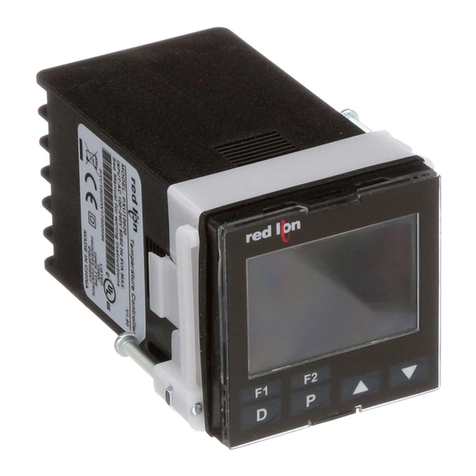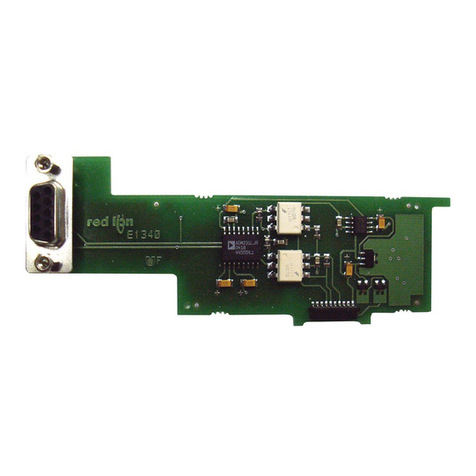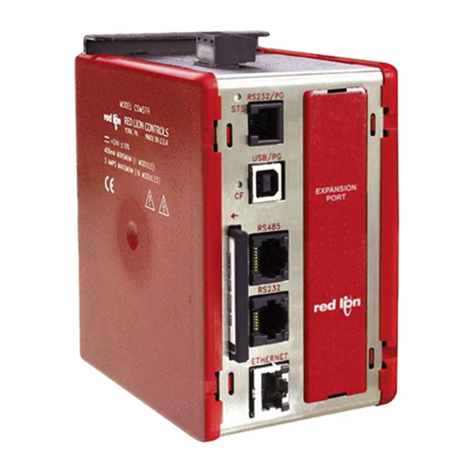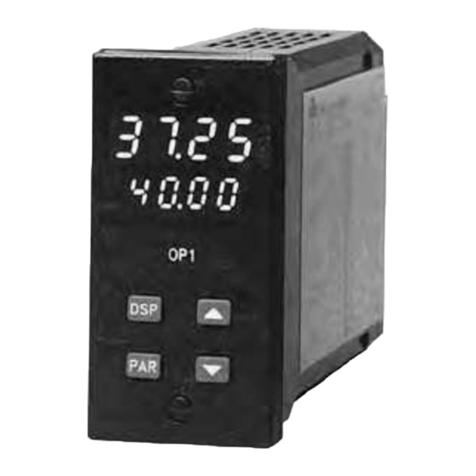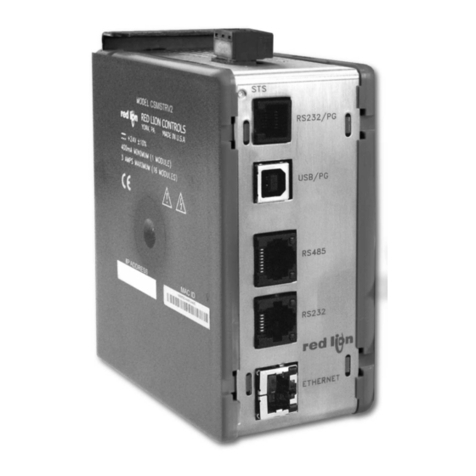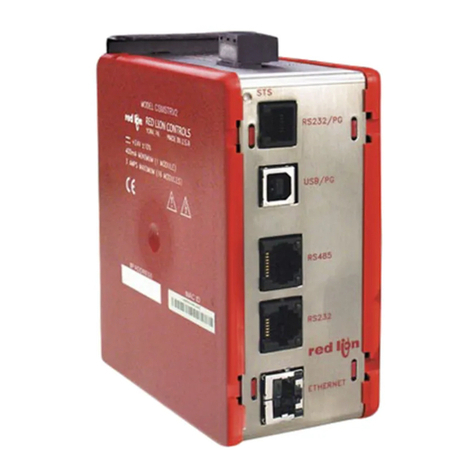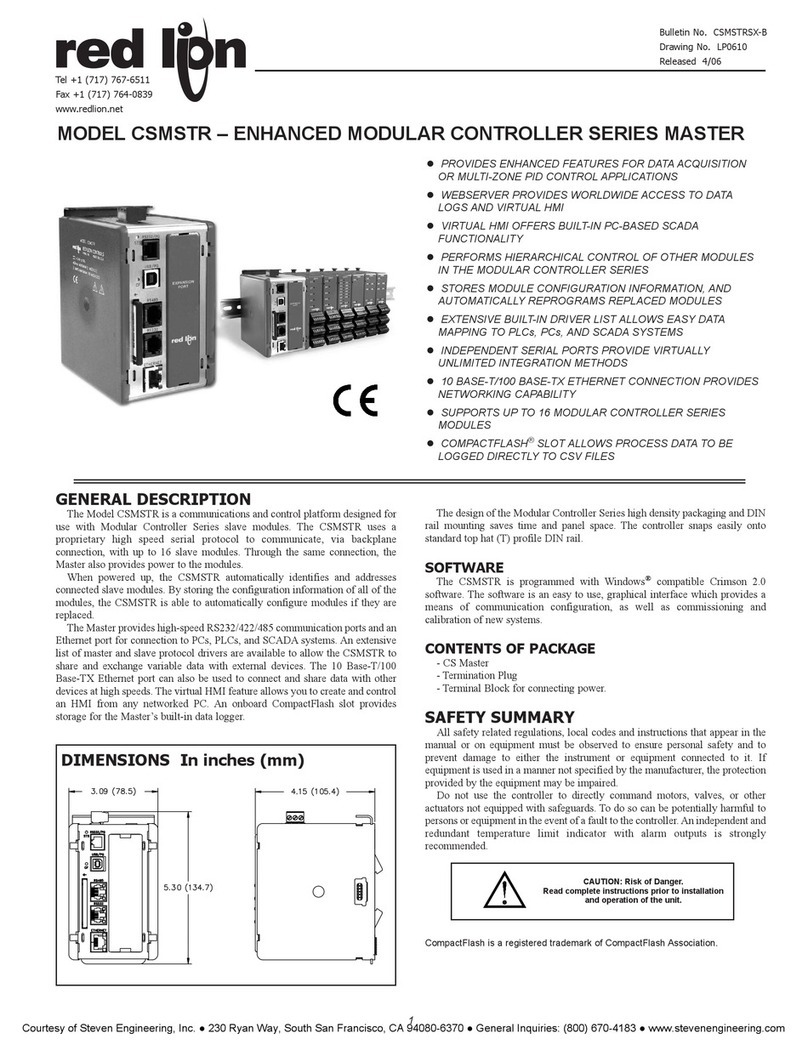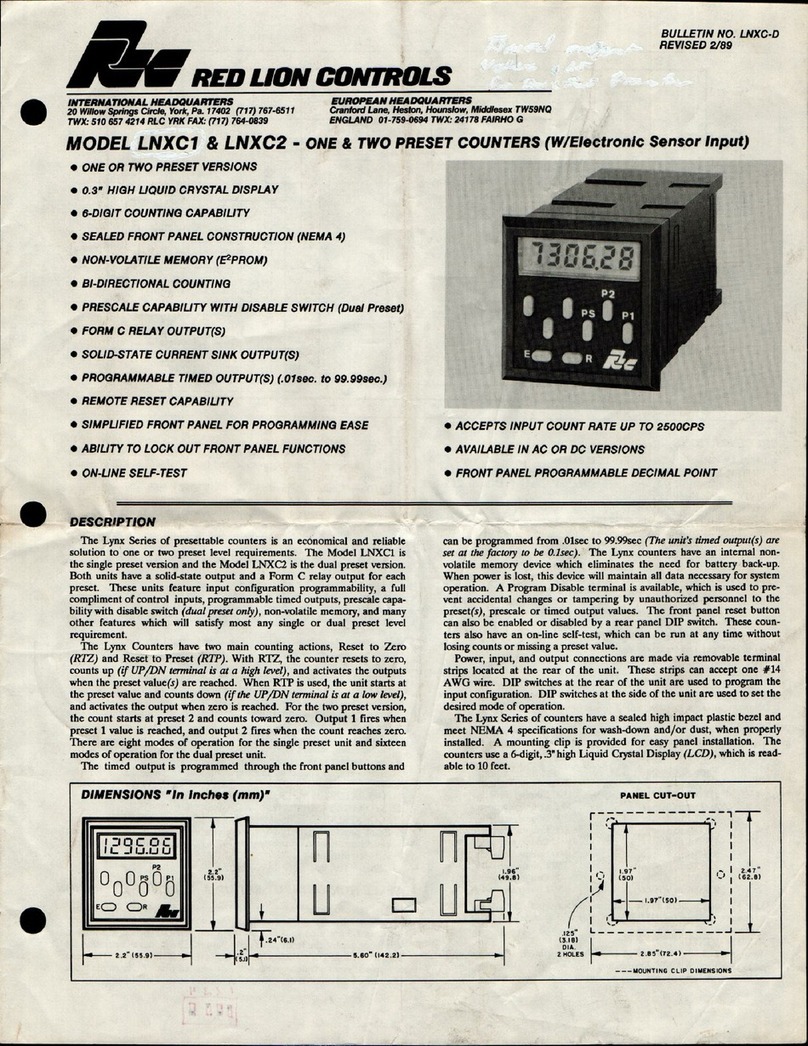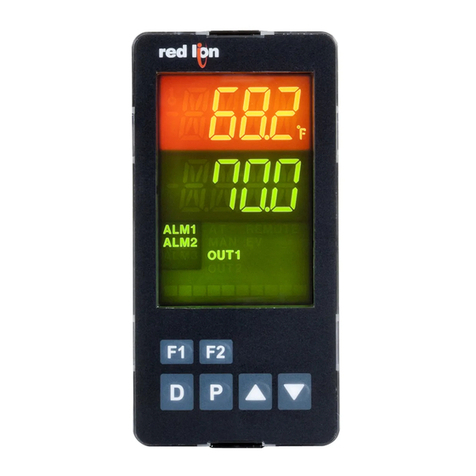3
A ribu e Iden ifica ion Char
➀ Data Swap: (1 byte), Attribute 1, Instance 1, Class 100 (decimal). Data is
normally sent and entered as follows: Pax display value = 500000 (7A120h).
4 byte value sent would be 20 A1 07 00. Setting the data swap value to 1
would result in the data being sent as 00 07 A1 20. This attribute can only be
set to 0 or 1, all other values are ignored. The factory setting value is 0. Data
Byte is saved in EEPROM memory.
➃ DIP Switch Values: (1 byte), Attribute 6, Instance 1, Class 100 (decimal).
Returns the dip switch setting. Switch 1 = SB, 1 = on.
➂Polling Flags: (3 bytes) Attribute 3 - 5, Instance 1, Class 100 (decimal). The
DeviceNet card is continually requesting values from the PAX unit. The
polling flags determine what values are requested during each loop. Setting
the flags to “1” enables the card to poll that particular value. A “0” value
disables it. Turning polling flags off allows the card to request fewer values
and therefore decreases the internal loop time, which allows the values that
are polled to be updated more often.
If a Set Attribute is executed for any value, that value is automatically
updated to the latest value, regardless of whether the polling flag is on or off.
On power up, all values are updated regardless of Polling flag settings.
Polling flag values are saved in EEPROM memory. Factory settings is “on”
for all Polling flags.
See Meter Attribute Identification Chart for polling flags.
➄Store Flags: (3 bytes) Attribute 26 - 28, Instance 1, Class 100 (decimal). This
set of flags determines whether the attribute is stored to EEPROM when a Set
or Reset service code is executed. If the flag is 0, the value is not saved to
EEPROM memory in the PAX. If the flag is 1, the value is saved immediately
to EEPROM memory in the PAX. Factory setting is “on” for all Store Flags.
The attributes are grouped in blocks. Storing one attribute may cause others
to be stored. If an attribute is SET frequently, its store flag should be set to 0
to increase EEPROM life.
MANUAL MODE DESCRIPTION ➅
(CSR) Control Status Register [16] (PAX)
The Control Status Register is used to directly control the meter’s outputs
(setpoints and analog output), or view the state of the setpoint outputs and the
status of the temperature sensor (PAXT only). The attribute is bit mapped with
each bit position within the attribute assigned to a particular control function.
The control functions are invoked by writing to each bit position. The bit
position definitions are:
In Manual Mode, the setpoint outputs are defined by the values written to bits
b0, b1, b2, b3; and the analog output is defined by the value written to the AOR.
Internal control of these outputs is then overridden. In automatic mode, the
setpoint outputs can only be reset off.
Example:
1. Select manual mode for all outputs:
Value to write to attribute 16: 0010h
1 value – 52 msec
5 values – 230 msec1 value – 100 msec
10 values – 430 msec5 values – 500 msec
All values (19) – 750 msecAll values (10) – 1.00 sec
PAXI/PAXCK/PAXDPPAX
TYPICAL UPDATE TIMES
1 = manual mode
0 = automatic mode
bit 4: Manual Mode
bit 3: SP4 Output
bit 2: SP3 Output
bit 1: SP2 Output
bit 7: Always stays 0, even if 1 is sent.
1 = sensor fail
0 = sensor normal
bit 6: Sensor Status (PAXT only)
bit 5: Always stays 0, even if 1 is sent.bit 0: SP1 Output
0 = output off
1 = output on
VALUE DESCRIPTION SERVICE CODES SUPPORTED POLLING STORE
PAX PAXI PAXCK PAXDP PAX PAXI PAXCK PAXDP
1Data Swapping Flag ➀G, S G, S G, S G, S N/A N/A
2Bit Str be Attribute G, S G, S G, S G, S N/A N/A
3P lling Flags 1 ➂G, S G, S G, S G, S N/A N/A
4P lling Flags 2 ➂G, S G, S G, S G, S N/A N/A
5P lling Flags 3 ➂N/A G, S G, S G, S N/A N/A
6DIP Switch ➃GGGG N/A N/A
7Input C unt A Timer Input A (rel) GG, S, R G, S, R G, R Attr 3, bit 0 Attr 26, bit 0
8T tal C unt B C unt Input B (rel) G, R G, S, R G, S, R G, R Attr 3, bit 1 Attr 26, bit 1
9Max C unt C RTC Time Calc G, R G, S, R G, S GAttr 3, bit 2 Attr 26, bit 2
10 Min Rate RTC Date T tal G, R G, S G, S G, R Attr 3, bit 3 Attr 26, bit 3
11 SP 1 Min SP 1 Min Input G, S, R G, S, R G, S, R G, R Attr 3, bit 4 Attr 26, bit 4
12 SP 2 Max SP 2 Max Input G, S, R G, S, R G, S, R G, R Attr 3, bit 5 Attr 26, bit 5
13 SP 3 Scale A SP 3 Input A (abs) G, S, R G, S G, S, R GAttr 3, bit 6 Attr 26, bit 6
14 SP 4 Scale B SP 4 Input B (abs) G, S, R G, S G, S, R GAttr 3, bit 7 Attr 26, bit 7
15 AOR ➅Scale C SP 1 Off Input A ( ffset) G, S G, S G, S G, S Attr 4, bit 0 Attr 27, bit 0
16 CSR ➅L ad A SP 2 Off Input B ( ffset) G, S G, S G, S G, S Attr 4, bit 1 Attr 27, bit 1
17 ----- L ad B SP 3 Off ----- ----- G, S G, S ----- Attr 4, bit 2 Attr 27, bit 2
18 ----- L ad C SP 4 Off ----- ----- G, S G, S ----- Attr 4, bit 3 Attr 27, bit 3
19 ----- SP 1 Timer Start SP 1 ----- G, S, R G, S G, S, R Attr 4, bit 4 Attr 27, bit 4
20 ----- SP 2 C unt Start SP 2 ----- G, S, R G, S G, S, R Attr 4, bit 5 Attr 27, bit 5
21 ----- SP 3 Timer St p SP 3 ----- G, S, R G, S G, S, R Attr 4, bit 6 Attr 27, bit 6
22 ----- SP 4 C unt St p SP 4 ----- G, S, R G, S G, S, R Attr 4, bit 7 Attr 27, bit 7
23 ----- MMR ➅MMR ➅MMR ➅----- G, S G, S G, S Attr 5, bit 0 Attr 28, bit 0
24 ----- AOR ➅RTC Day AOR ➅----- G, S G, S G, S Attr 5, bit 1 Attr 28, bit 1
25 ----- SOR ➅SOR ➅SOR ➅----- G, S G, S G, S Attr 5, bit 2 Attr 28, bit 2
26 St re Flags 1 ➄G, S G, S G, S G, S N/A N/A
27 St re Flags 2 ➄G, S G, S G, S G, S N/A N/A
28 St re Flags 3 ➄N/A G, S G, S G, S N/A N/A
